

Old style beam pockets require extra materials to be purchased and transported to the job-site,
then cut and assembled together.
Anchor bolts attached to wood and styrofoam tend to move during the concrete pour, making alignment difficult.
Embed plates usually weigh much more than BP Series Beam Pockets. For our W21 example on the COMPARE page, the embed plate weight about 75 pounds including studs on the back. The BP-70 Beam Pocket weights about 30 pounds.
Embed plates usually require bolts to attach them to the forms, leaving behind 1/2 to 3/4 in holes in the formwork. Once they are in place, they require exact placement of tabs or plates for the attachment of the beam. The tabs require on-site structural welding on a ladder or a scaffold. Most building codes require on-site welding to be professionally inspected.
BP Series Beam Pockets come ready to assemble with all required screws and bolts included. It takes less than 5 minutes to assemble. The BP Series beam pocket includes the anchor bolts and clamp downs for easy beam alignment. The BP-70 model can handle wide flange beams sizes from W16 to W27. The BP-30 model -- for residential and small commercial applications -- can accommodate W6 to W16 wide flange steel beams. The BP-30 Beam Pocket can also be used with wood beams up to 16 in tall and 8 in wide.
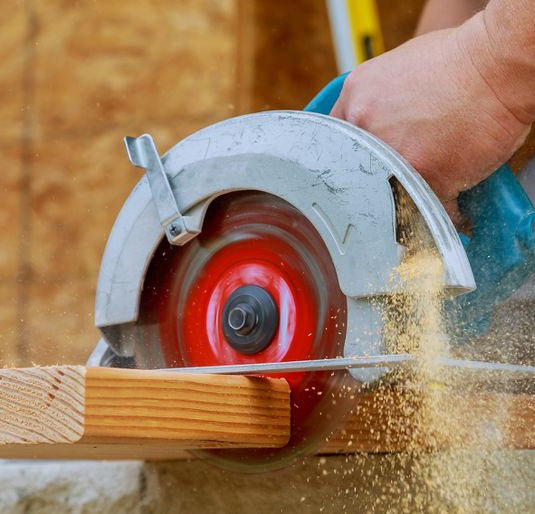
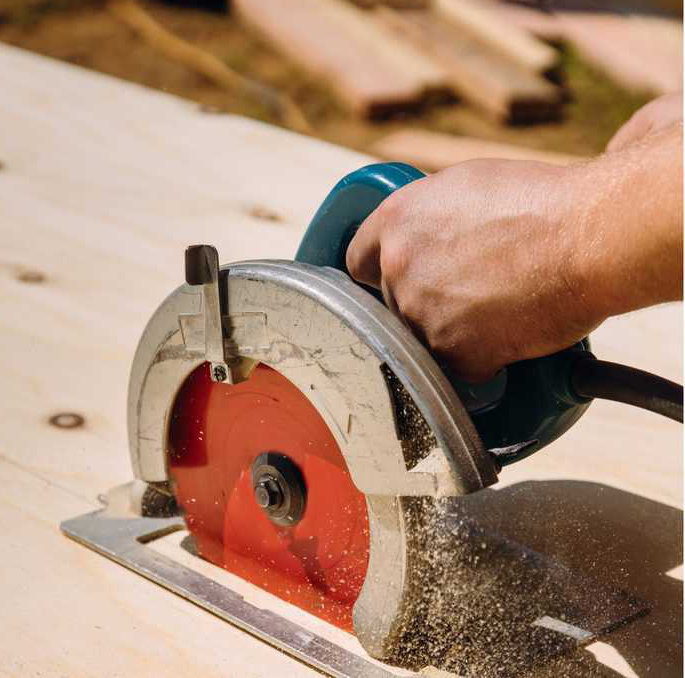
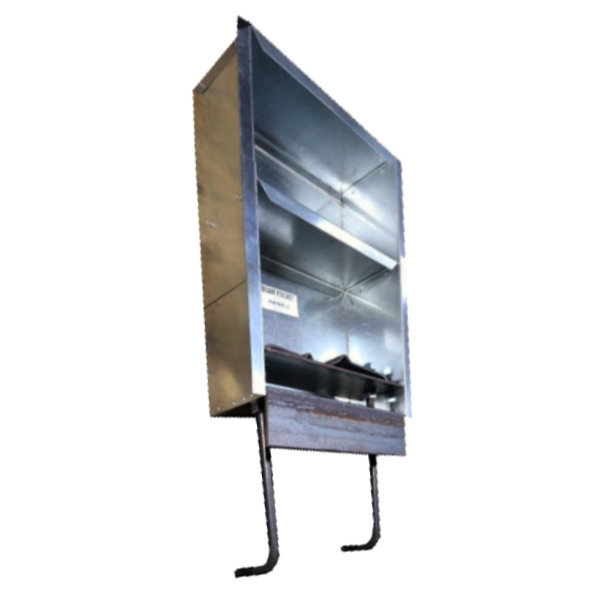
With traditional wood or styrofoam voids beam pockets, the void pocket form can take hours to remove. Fresh green concrete can easily be chipped and broken during the removal process. In addition, removal of the wood and stryofoam block-out forms generate a lot of trash.
The BP Series Beam Pocket stays in the concrete, so the removal processed is minimized. After the concrete is set, just unscrew the 4 to 6 screws from the front of the forms, then remove the forms. The beam pocket is in place. Then take out the 2 reinforcement shelves by unscrewing 8 sheet metal screws. Finally adjust the bearing plate to an approximate position as per the instructions and you are ready to set the beam.
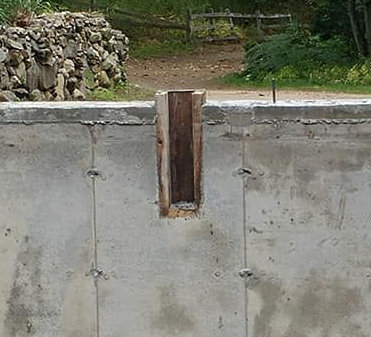
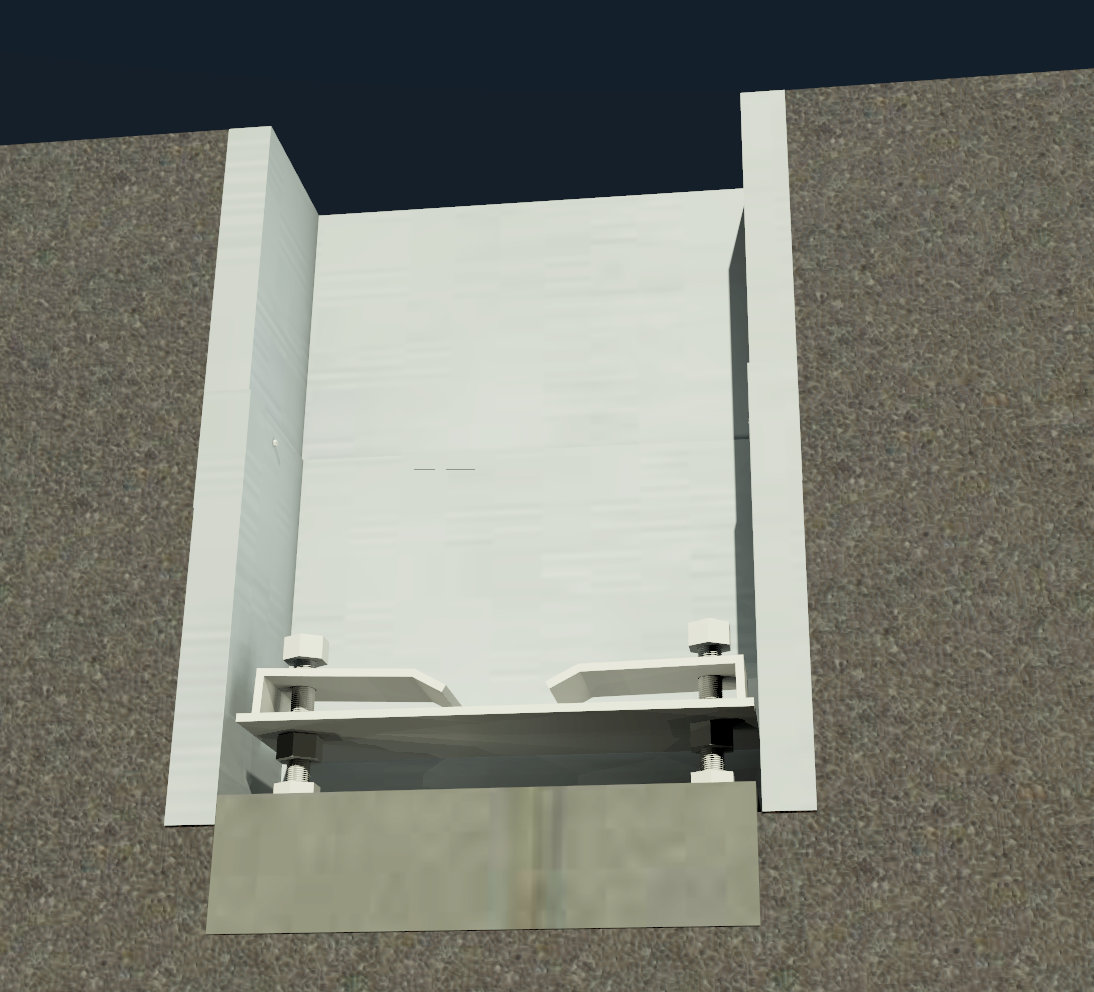
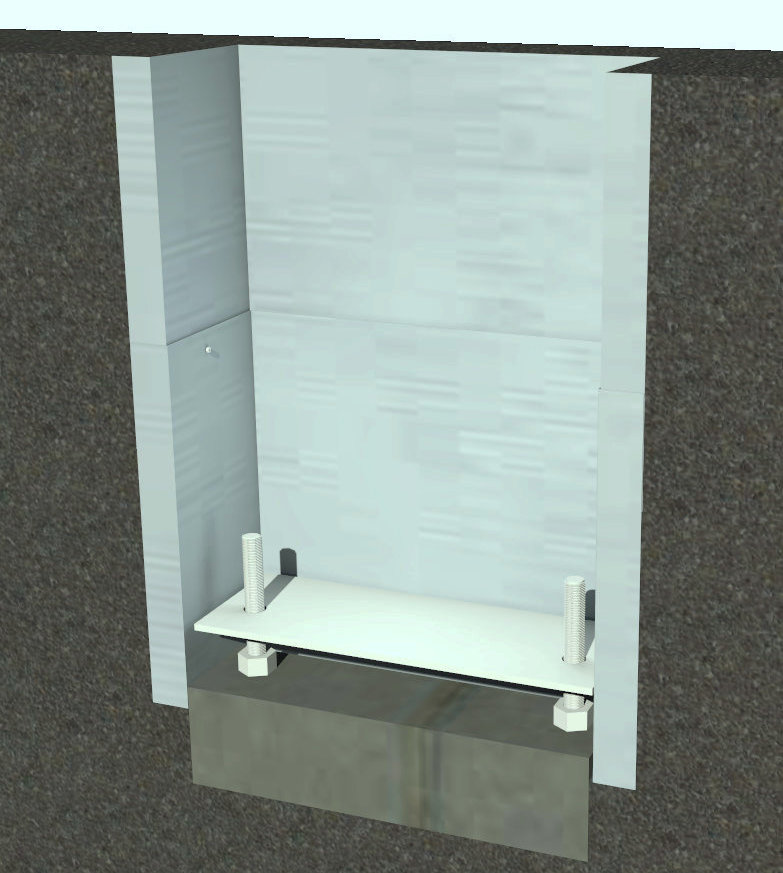
Traditional wood or styrofoam beam pockets require extra manpower and crane time
for proper placement of the beam. Time spent raising and lowering the beam with shims into proper
position wastes time and money. Reducing crane time at a cost of $400-$800 per hour makes the BP Series more affordable.
Crane time for holding and setting shims can easily run over one hour for each beam.
An embed plate requires setting the support tab or angle for the beam to be set and welded in place. Holes in the embed plate have to line up with the holes in the beam. Holes in the beam web and tab need exact alignment.
The steel pilaster needs to be leveled and bolted together. Then welding the base or beam could lead to welding injuries.
The beam can be set in a few minutes with the BP Series Beam Pocket. Small adjustments in height location of the beam can be achieved with a wrench, without a crane. Typically we have found that the cost for beam setting can be reduced to less than $100 in time per beam.
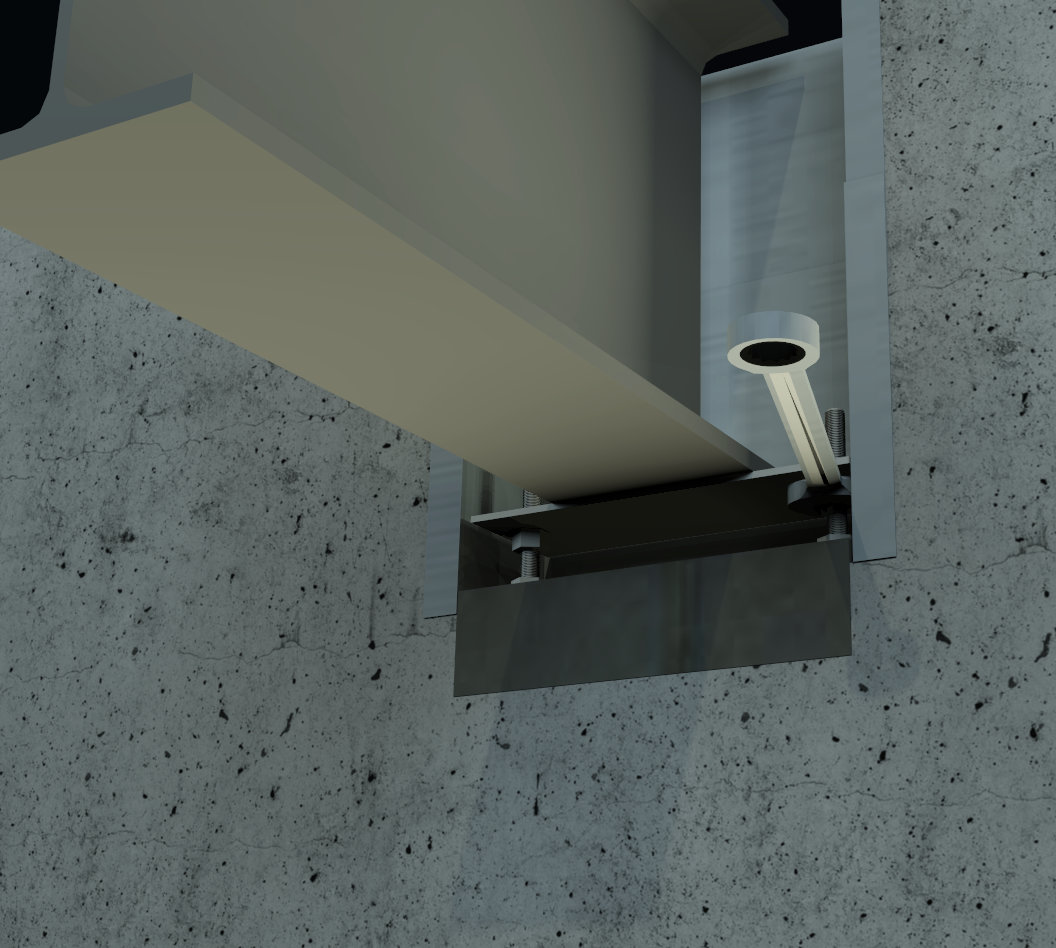
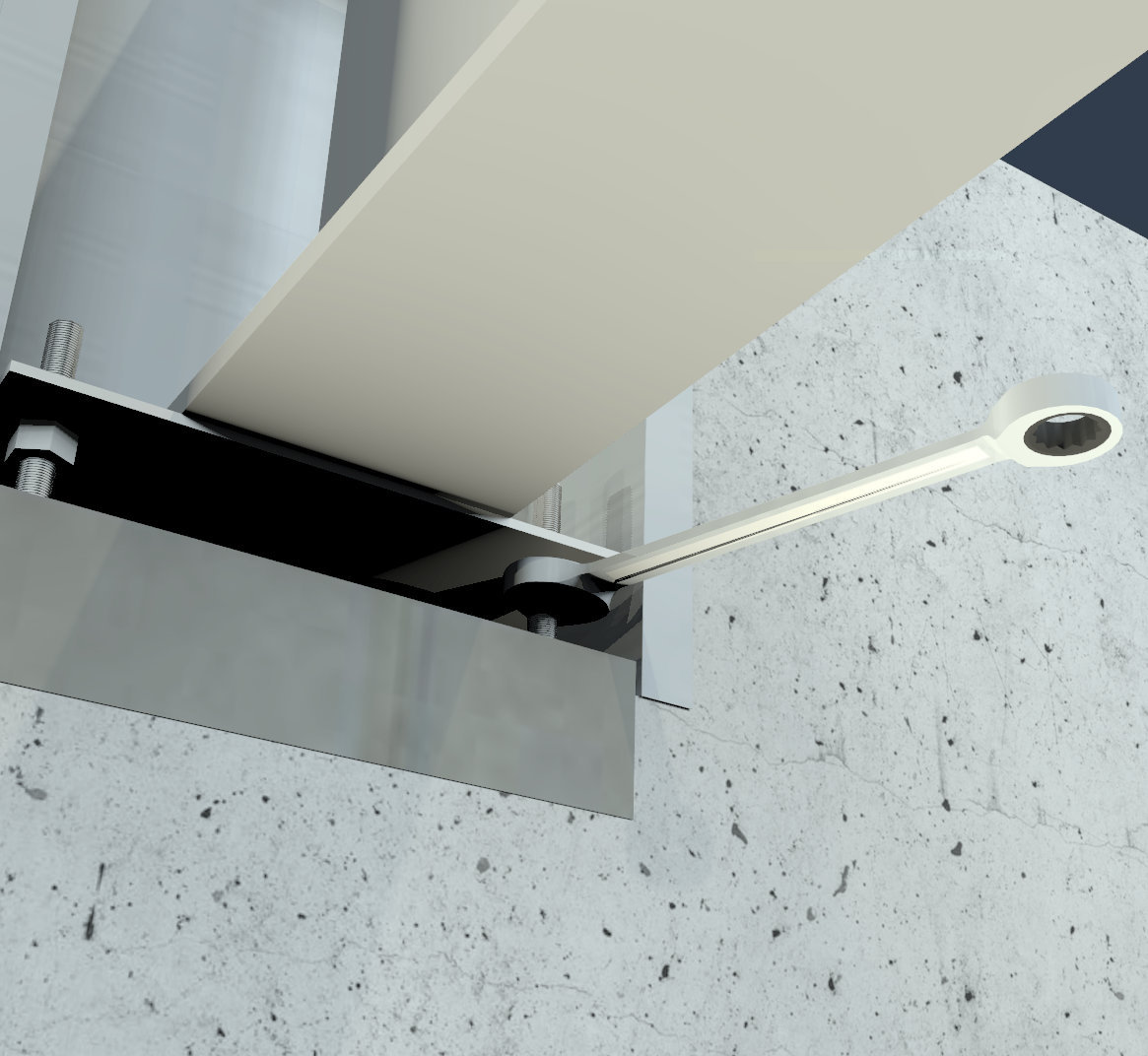
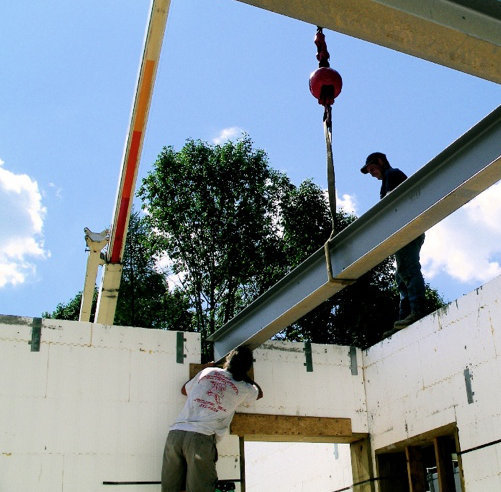
Old style wooden void beam pockets require exact anchor bolt placement. Steel beam placement in the
pocket requires a tolerance of an 1/8 inch for proper alignment. Concrete walls and beam pocket forms typically move a
little laterally and vertically from hydrostatic pressure during the concrete pumping
process.
Embed plates require structural tabs or angles to hold beams in place. These require exact placement to match holes in the tab and holes
in the beams that are delivered to the job site. Even slight variations require redrilling or modification of holes on
the job site. A COSTLY error.
Concrete and steel pilasters require the same alignment of anchor holes as the other options.
The anchor bolts on the BP Series Beam Pockets are designed with a clamp hold-down system that allows for lateral movement and thermal expansion/contraction along the length axis of the steel beam. The adjustable bearing plate and clamp downs allow for typical job site variations.
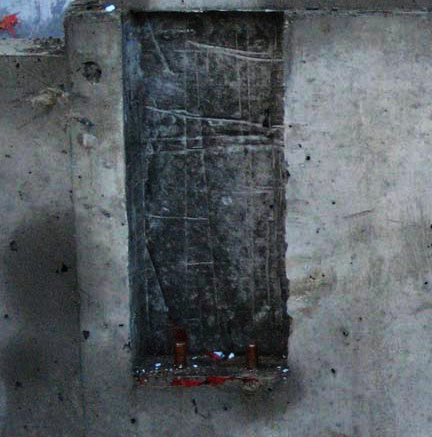
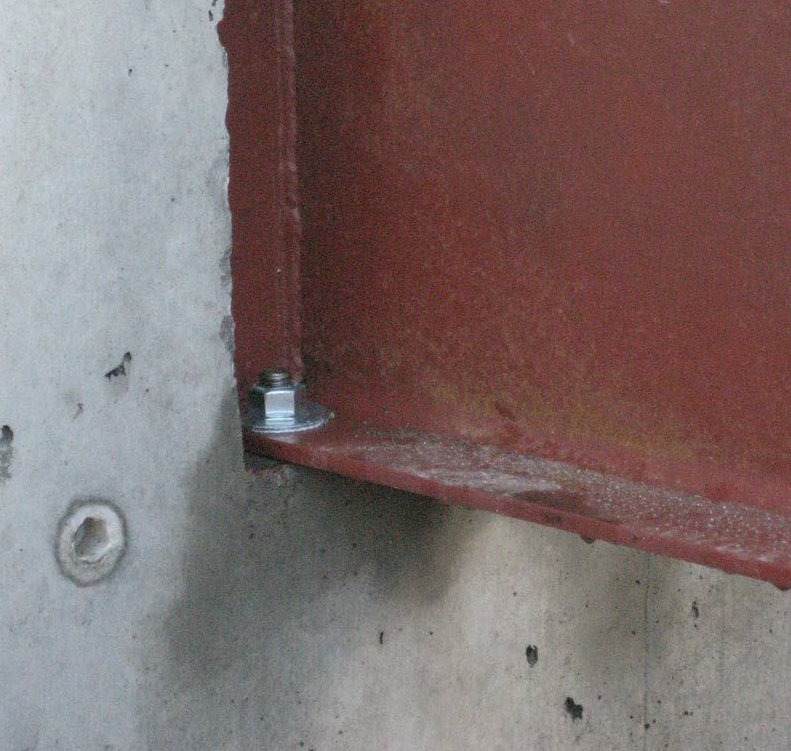
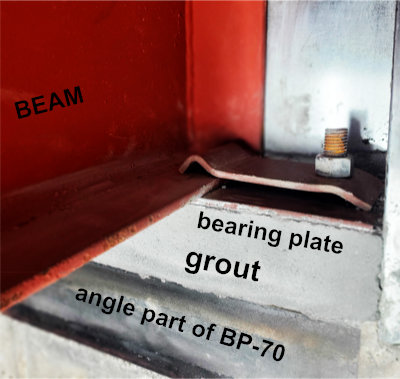
When wooden void beam pockets are removed, the green concrete edges have a tendency to break or chip. Excessive pounding of the wood beam pocket during removal weakens and cracks the young uncured concrete.
The heat from structural deep welding to connect the tab or angle to the embed plate can weaken green concrete.
The edges of concrete pilasters can easily break away during the green concrete stages, concrete requires 7 days for early strength and 28 days for full strength.
The bottom edge of a BP Series Beam Pocket protects the concrete from shear failure and breakage with the 4x4 steel angle at the base. This bottom angle also protects the concrete edge during the beam placement procedure. The metal sides protect the vertical concrete edges. Typically the steel beam is placed before the concrete has come to full strength. With this weakened concrete, just a little beam drop or bump during the steel placement process may damage the concrete .
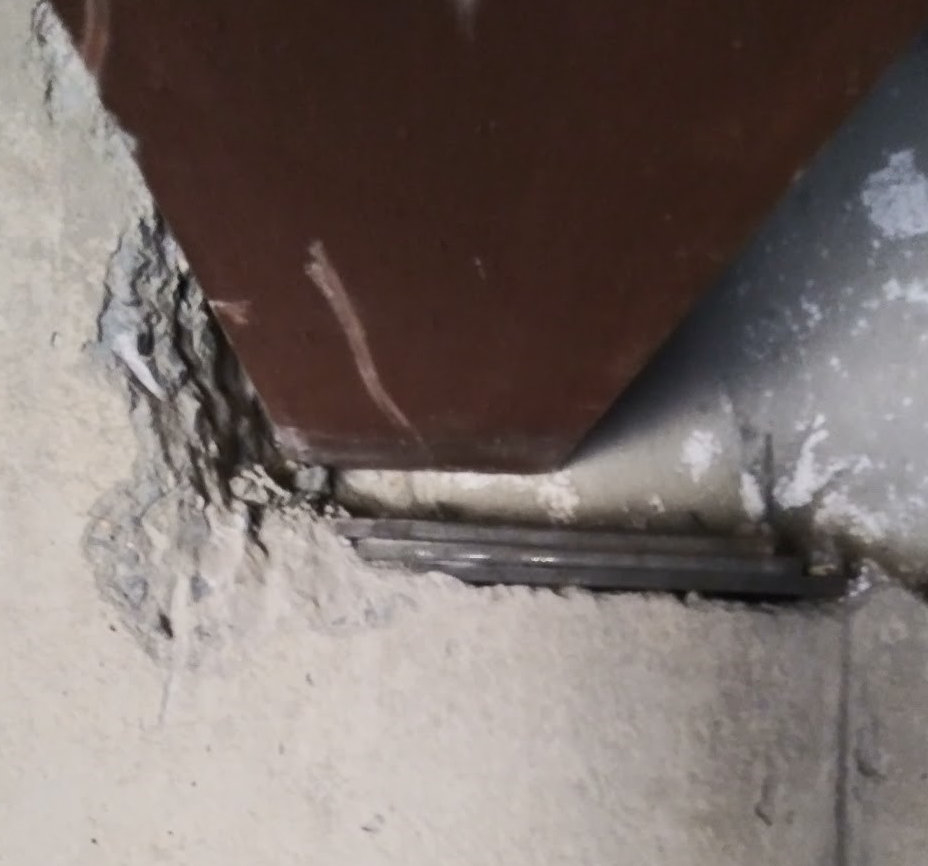
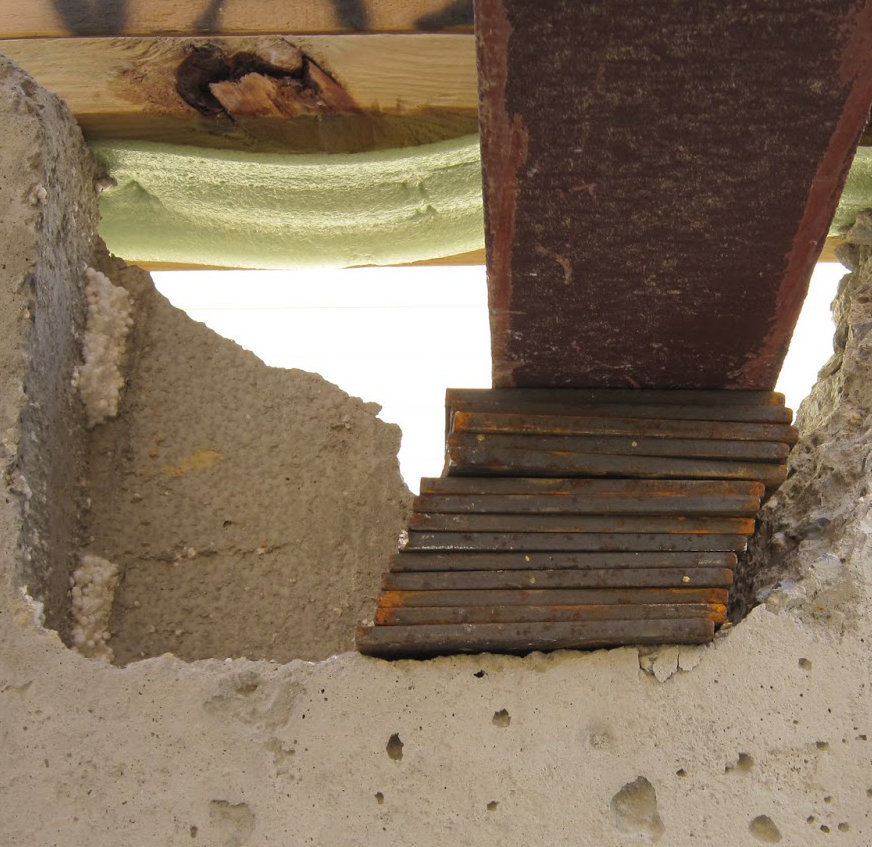
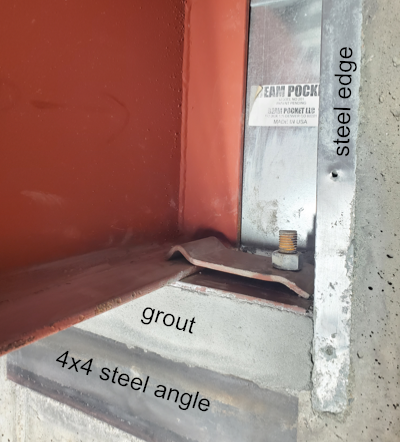
The intense point load from a steel beam bearing on concrete can break the concrete edge.
Old style beam pockets do not distribute this weight over the edge of the concrete.
High loads on the concrete edge can shear or fracture the concrete.
Embed plates depend on the shear strength of the anchors or bolts. The design load is typically much smaller than the direct bearing solutions such as the BP Series Beam Pocket.
Concrete pilasters can have a direct bearing capacity higher than the embed plates, but design loads need to be reduced due to shear plane failure possibilites.
The BP Series Beam Pocket transfers the weight from the beam flange through the bearing plate and the bottom angle to distribute the weight more evenly into the concrete This steel angle also minimizes damage to the lower edge during removal of the concrete forms and setting the beam. The live and dead load on the BP Series Beam Pocket after grout can exceed the embed plate by 80%.
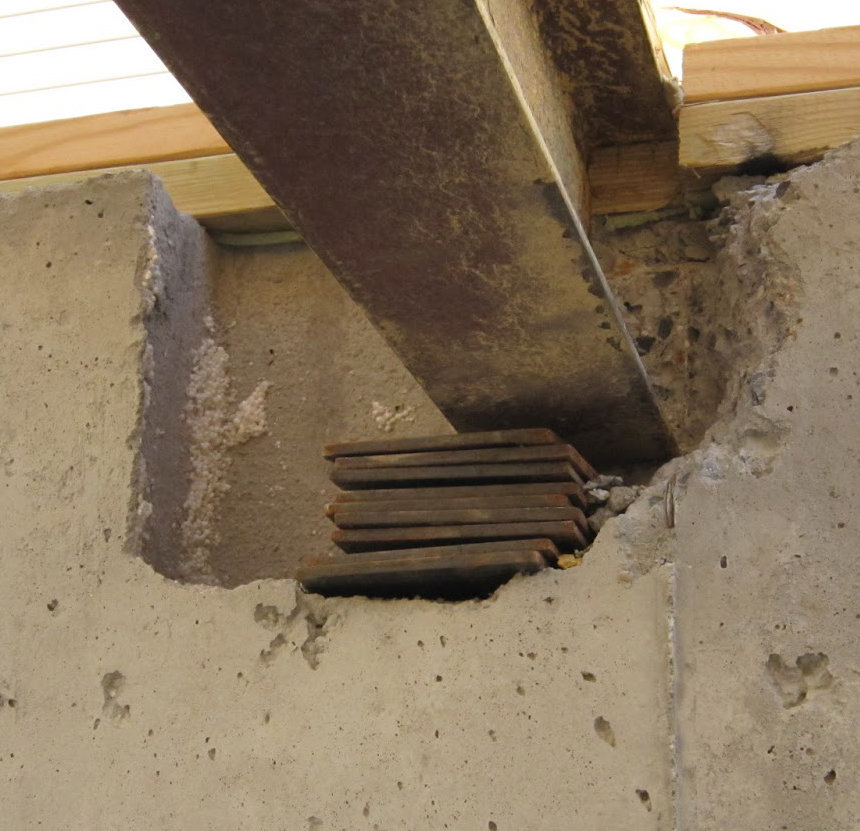
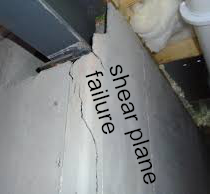
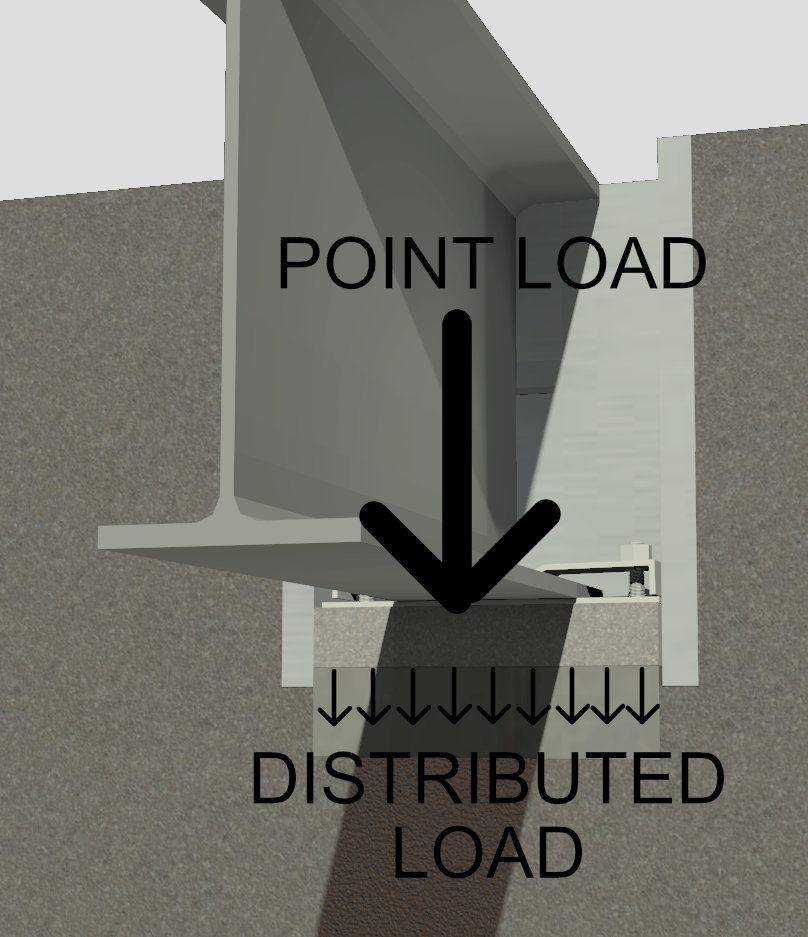
People typically grout all around a beam with old style beam pockets. A standard W27 beam pocket can use more than a full bag of structural grout if packed around the beam. The continuous contact of concrete and grout around the beam increases the likelihood of moisture and rust degradation. The thermal expansion rates of steel and grout are different. Over time air spaces can occur around the steel or wood beam allowing oxidation to begin. If there is any moisture wicking through the concrete and / or grout, rust and degradation of the steel can occur.
The BP series beam pocket uses a small amount of structural grout, about a third of a bag, decreasing time to mix and install. The grouting process takes about 15 min for each BP Beam Pocket as opposed to 1.1 hours for the old style beam pocket.
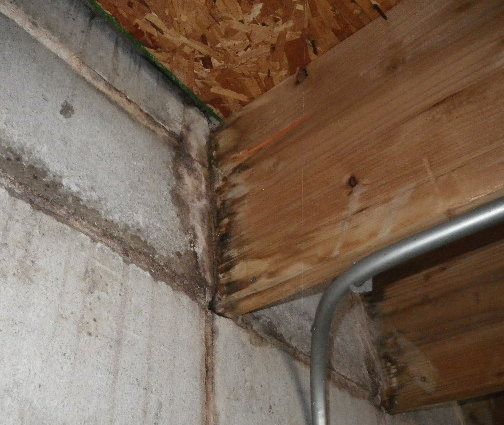
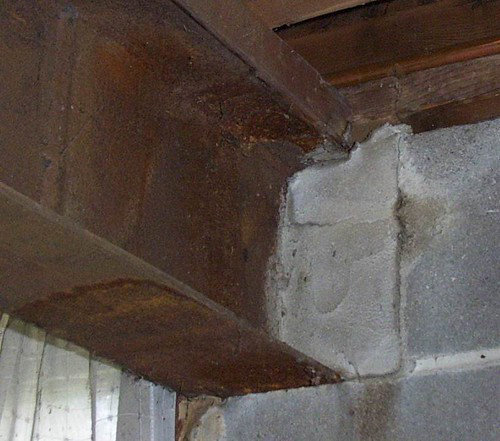
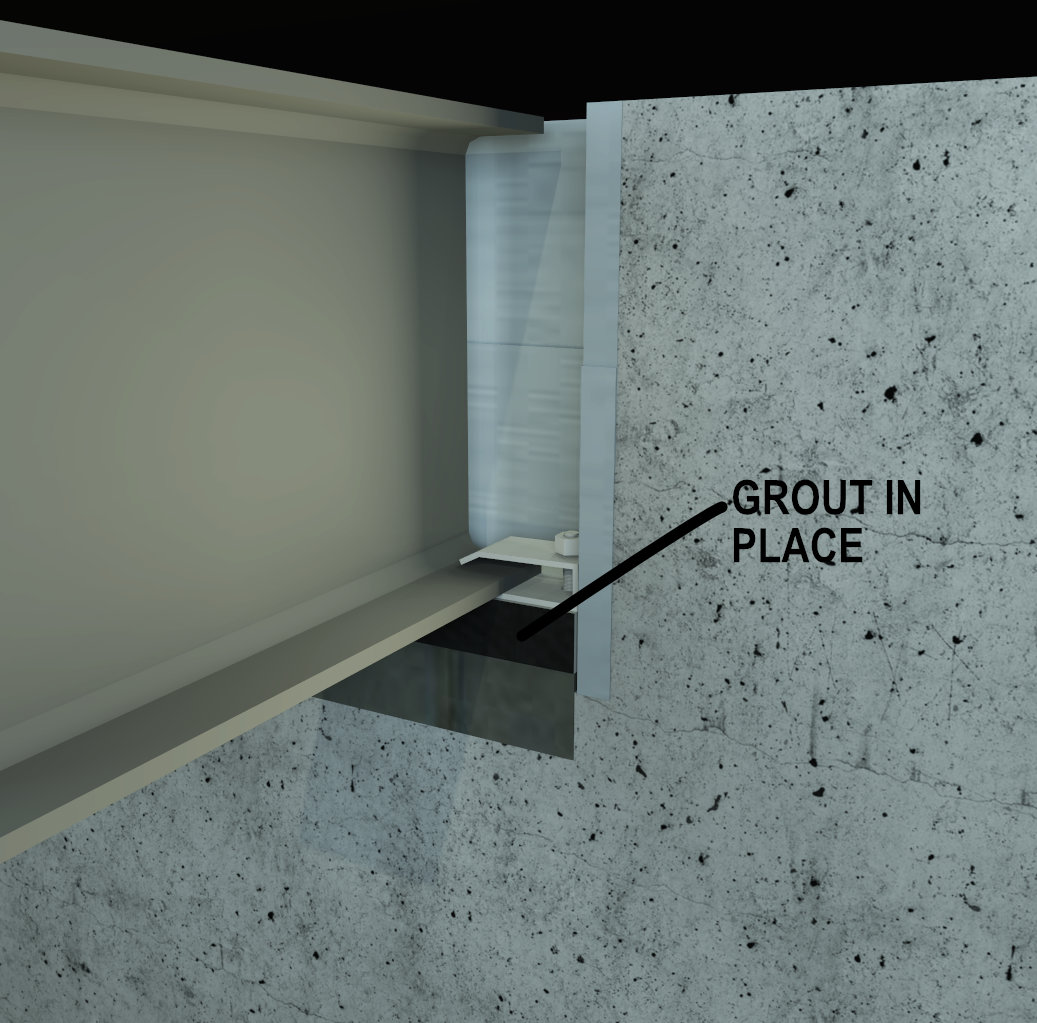
Installing embed plates requires the addition of a steel angle or a steel tab. The tab has to be located exactly.
Locating the tab with the beam hanging mid-air can be dangerous. Then welding the tab or angle while on a ladder
with a welding face shield can lead to a fall or welding injuries.
Removing wood or styrofoam voids on a ladder or scaffold from the newly formed concrete can lead to fall and injury.
Placing shims under the beam while the crane raises and lowers leads to smashed fingers injuries.
Construction of the steel pilaster requires leveling and bolting the assembly together. Alternatively welding the
base or beam could lead to welding injuries.
Since most of the BP Series Beam Pocket stays in the concrete, the removal process is minimized. The removal of a few screws and 8 ounces of sheet metal is a lot safer than the alternatives. No crowbars pushing and pulling the wooden void out of the green concrete. There is no welding on a ladder or scaffold. No time spent lifting and lowering the beam to set shims. Simply set the beam on the adjustable bearing plate. Send the crane home and adjust the beam height with a wrench.
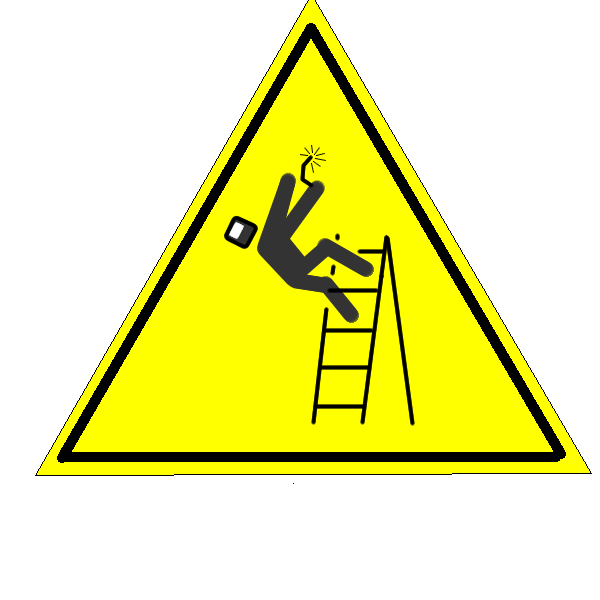
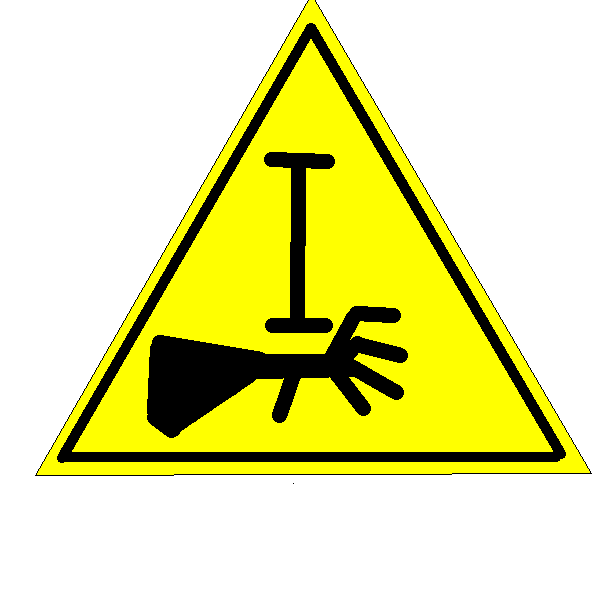

Time is money. Paying your skilled laborers to build form boxes out of
plywood, then remove those boxes is a waste of both.
Embed plates require the additional time and cost for a deep structural weld, plus the required welding inspections.
Concrete pilasters require extra concrete and rebar. Steel pilasters require more steel than the other options.
The BP Series Beam Pocket takes less than five minutes to assemble and less than five minutes to install. The BP Series Beam Pocket includes clamp down anchors and all the parts necessary for the beam placement and attachment. Review the detailed cost analysis on the COMPARE page.
Plywood and 2x wood pieces from old style beam pockets which are
often broken, create piles of wood trash which are not
recyclable in most cities.
Styrofoam is even worse. Each creates massive waste and almost no city recycles styrofoam.
Embed plates weigh more than the BP Series Beam Pocket, and use more steel to provide less support.
Pilasters use more steel and concrete resouces.
The BP Series Beam Pocket installation discards only two or three small sheet steel metal parts -- about 8-12 ounces -- which can easily be recycled. The cardboard packing materials are also recyclable.
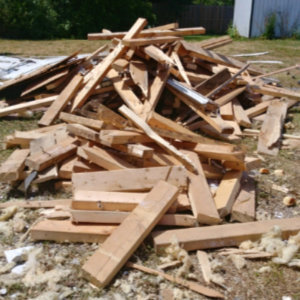
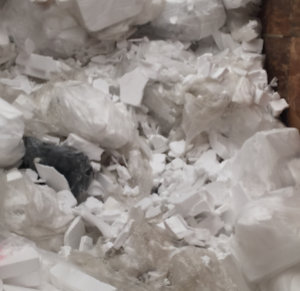
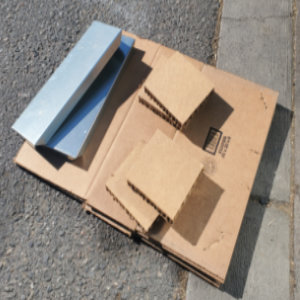
Wood and styrofoam voids generate a lot of waste with little or no possibility for recyclying. With embed plates, welding adds to carbon CO2 exhausts and VOC gas.
All the components in BP Series Beam Pocket are pre and post consumer recyclable, it can add to an overall LEED positive rating.
| LEED 4.1 CHARACTERISTICS |
BP-SERIES Beam Pocket |
WOOD VOID |
STYRO FOAM |
EMBED PLATE |
|---|---|---|---|---|
| percentage of material- pre-consumer use that is recyclable |
100% | 0% | 0% | 100% |
| percentage of material- post-consumer use that is recyclable |
100% | 0% | 0% | 100% |
| percentage of product to be disposed after installation |
3% -(1) | 100% -(2) | 100% | 3% -(3) |
| percentage of product that is released as CO2 upon disposal |
3% -(1) | 100% | 100% | 3% -(3) |
| percentage of product that is recyclable after building expiration |
100% | 0% | 0% | 100% |
| percentage of product that is subject to construction waste disposal |
3% | 100% | 100% | 3% -(3) |
| gas emission potential welding process |
0% | 0% -(2) | 0% -(2) | 100% |
| co-2 potential release during installation welding process |
0% | 0% -(2) | 0% -(2) | 100% |
| low gas emitting materials in product manufacturing |
95% | 10% -(2) | 0% -(2) | 50% - (4) |
| pollution potential from disposal |
5% | 90% | 95% | |
| VOC potential | 5% | 80% -(2) | 90% | 30% - (4) |
| notes 1- only if cardboard package is not recycled 2 - depends of wood disposal method - landfill or burning 3 - depends on shipping container or strapping 4 - depends on type of welding for stud placement |
All the parts in BP Series Beam Pocket are made in USA. All the labor to cut, bend and assemble the parts are performed in Colorado. All of the design and engineering work is performed in Colorado.